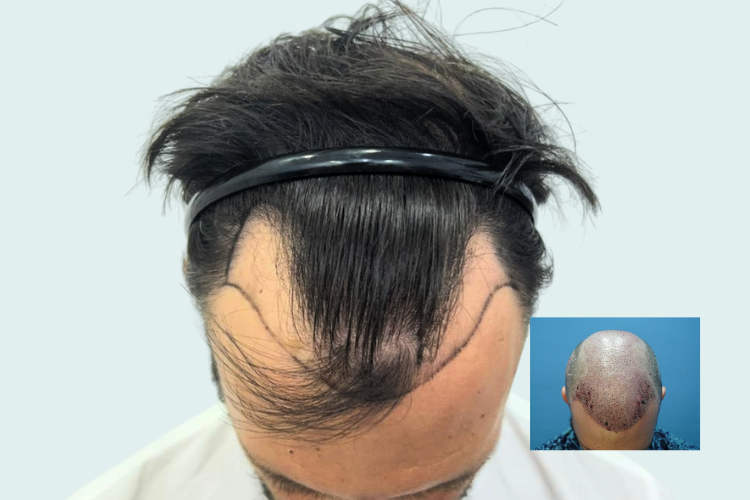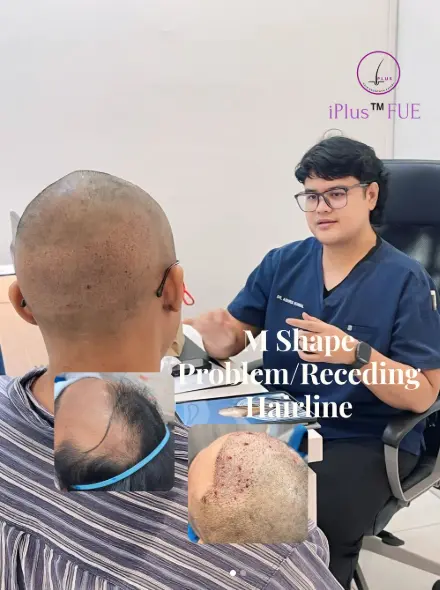M-Shape Hair Transplant
- Home
- M-Shape Hair Transplant

What is M-Shap Hair Transplant
Female pattern baldness, medically known as androgenetic alopecia, is one of the most common causes of hair thinning in women. Unlike men, who usually experience receding hairlines or bald spots, women typically notice diffuse thinning across the scalp. In some cases, it may also appear as telogen effluvium, where hair sheds excessively due to stress or hormonal changes.
Female Hair Loss: Causes, Patterns, and Effective Solutions
Hair loss is often thought of as a male problem, but the truth is that millions of women around the world experience it too. Female hair loss is not only a physical issue—it also deeply affects confidence, self-image, and emotional well-being. Unlike men, who usually experience bald spots or receding hairlines, women tend to face diffuse thinning across the scalp. This subtle yet widespread pattern often makes it harder to detect and treat in time.
In this article, we’ll explore the causes, symptoms, and treatment options for female pattern baldness, along with practical tips and answers to frequently asked questions.
Understanding Female Pattern Baldness
Female pattern baldness, medically known as androgenetic alopecia, is the most common form of hair thinning in women. It usually begins with thinning at the part line and gradually spreads across the scalp. Unlike male pattern baldness, women rarely lose all their hair but instead notice gradual shedding over time.
Key Signs of Female Hair Loss:
- Gradual thinning of hair across the scalp
- Widening of the hair part
- Excessive hair shedding during brushing or washing
- Reduced hair volume and density
Common Causes of Hair Loss in Women
Female hair loss can result from multiple factors. Identifying the root cause is crucial for choosing the right treatment.
1. Genetics (Hereditary Hair Loss)
If your mother, grandmother, or other female relatives experienced hair thinning, you may be genetically predisposed to female pattern baldness.
2. Hormonal Imbalances
Hormonal changes during pregnancy, menopause, or thyroid disorders can trigger hair thinning. Conditions like PCOS (Polycystic Ovary Syndrome) are also linked to significant hair loss.
3. Stress and Lifestyle Factors
Chronic stress, poor diet, lack of sleep, and overworking can cause a condition known as telogen effluvium, where more hair follicles enter the resting phase and shed excessively.
4. Medical Conditions
Health issues such as anemia, scalp infections, autoimmune diseases (like alopecia areata), and chronic illnesses can contribute to hair loss in women.
Popular Services
Book Appoinment
Make a call for any type of query.
+60125174606

Preventive Tips for Healthy Hair
- Avoid tight hairstyles that pull on the scalp
- Limit heat styling and chemical treatments
- Wash hair with mild shampoos and conditioners
- Massage the scalp regularly to improve blood circulation
- Schedule regular health check-ups to rule out underlying conditions
How Female Hair Loss Differs from Male Baldness
While male pattern baldness typically begins with a receding hairline or bald spot, female hair loss shows up as
- Diffuse thinning over the entire scalp
- Thinning at the crown with preserved hairline
- More gradual progression compared to men
This makes female hair loss less noticeable at first but equally distressing.

FAQs About M-Shap Hair Transplant
Q1: Is female hair loss permanent?
Not always. Some cases, like telogen effluvium, are temporary and reversible. However, genetic hair loss may require long-term treatment.
Q2: At what age do women usually experience hair loss?
Hair loss can begin as early as the late teens or 20s, but it becomes more noticeable after the age of 40, especially around menopause.
Q3: Can stress alone cause hair loss?
Yes. Chronic stress can push more hair follicles into the resting phase, causing significant shedding over time.
Q4: Is hair transplant effective for women?
Yes, hair transplant surgery can be a permanent solution for suitable candidates with localized thinning.
Q5: What vitamins are good for hair growth?
Biotin, Vitamin D, Iron, and Zinc are essential for healthy hair. Always consult a doctor before taking supplements.
Final Thoughts
Female hair loss is a growing concern, but it doesn’t have to define your confidence or beauty. By understanding the causes, patterns, and treatment options, women can take proactive steps toward maintaining healthy hair. Whether through medical treatments, lifestyle changes, or advanced solutions like hair transplants, there are ways to manage and overcome hair thinning effectively.
If you’re experiencing persistent hair loss, consult a dermatologist or trichologist for a personalized treatment plan. Early intervention is the key to long-term results.
